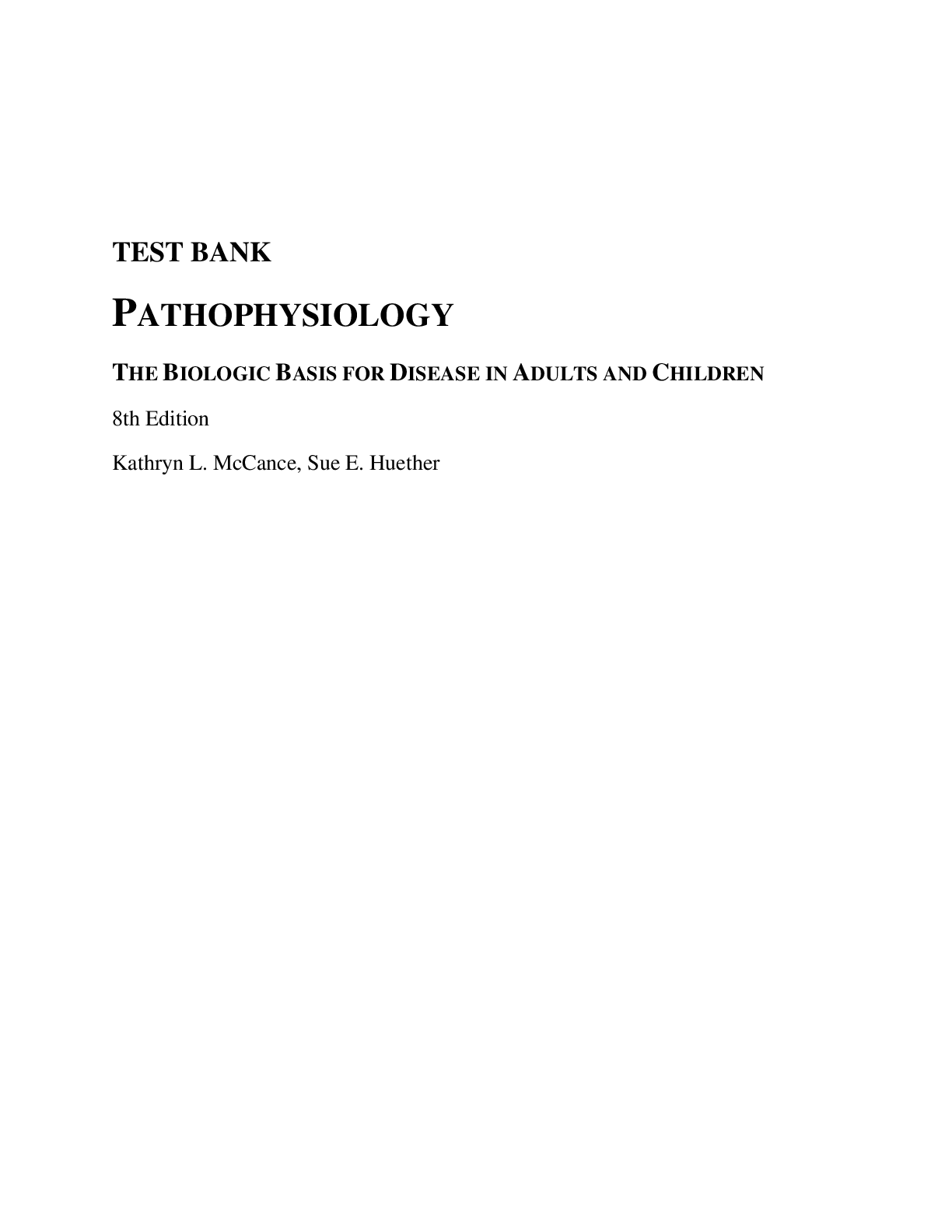Biology > TEST BANKS > brock-biology-of-microorganisms-15th-test-bank-solved-questions-with-correct-answers-2020 (All)
brock-biology-of-microorganisms-15th-test-bank-solved-questions-with-correct-answers-2020
Document Content and Description Below
• C) only the chromosome and enzymes to immediately begin cellular metabolism • D) chromosome, proteins, and all other cellular constituents Answer: D Bloom’s Taxonomy: 1-2: Remembering/Under... standing Chapter Section: 5.1 • Bacterial growth refers to • A) an increase in the number of cells. • B) the occurrence of binary fission. • C) the time required for one cell to divide into two. • D) the occurrence of mitosis. Answer: A Bloom’s Taxonomy: 1-2: Remembering/Understanding Chapter Section: 5.1 • The time interval required for the formation of two cells from one is called the • A) generation time. • B) growth time. • C) growth rate. • D) division rate. Answer: A Bloom’s Taxonomy: 1-2: Remembering/Understanding Chapter Section: 5.1 • Turbidity measurements are commonly utilized for monitoring • A) planktonic cultures. • B) biofilms. • C) conies. • D) sessile cultures. Answer: A Bloom’s Taxonomy: 1-2: Remembering/Understanding Chapter Section: 5.8 • The time between inoculation and the beginning of growth is usually called the • A) lag phase. • B) log phase. • C) dormant phase. • D) death phase. Answer: A Bloom’s Taxonomy: 1-2: Remembering/Understanding Chapter Section: 5.3 • Optical density and viable cell concentration are LEAST proportional to each other during the • A) lag phase. • B) exponential growth phase. • C) stationary phase. • D) death phase. Answer: D Bloom’s Taxonomy: 3-4: Applying/Analyzing Chapter Section: 5.8 • When attempting to determine viable cell counts of a heatsensitive bacterial isolate, which cell counting method should be avoided? • A) spread-plate method • B) pour-plate method • C) live staining and direct counting with a microscope • D) both spread- and pour-plate methods Answer: B Bloom’s Taxonomy: 3-4: Applying/Analyzing Chapter Section: 5.7 • Bacteria that are able to grow in humans and cause disease would be classified as • A) psychrophiles. • B) mesophiles. • C) thermophiles. • D) hyperthermophiles. Answer: B Bloom’s Taxonomy: 3-4: Applying/Analyzing Chapter Section: 5.9 • An agar plate for counting colonies and maximizing statistical validity should ideally contain • A) 1 to 100 colonies. • B) 50 to 100 colonies. • C) 30 to 300 colonies. • D) 100 to 1000 colonies. Answer: C [Show More]
Last updated: 2 years ago
Preview 1 out of 80 pages

Buy this document to get the full access instantly
Instant Download Access after purchase
Buy NowInstant download
We Accept:

Reviews( 0 )
$14.00
Can't find what you want? Try our AI powered Search
Document information
Connected school, study & course
About the document
Uploaded On
Apr 08, 2021
Number of pages
80
Written in
Additional information
This document has been written for:
Uploaded
Apr 08, 2021
Downloads
0
Views
106







.png)

_removed.png)
















